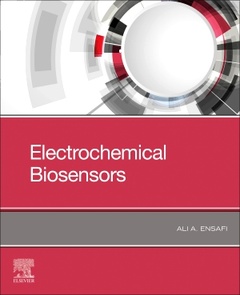Description
Electrochemical Biosensors
Coordinator: Ensafi Ali A.
Language: English
Subject for Electrochemical Biosensors:
388 p. · 19x23.3 cm · Paperback
Description
/li>Contents
/li>Readership
/li>Biography
/li>Comment
/li>
Electrochemical Biosensors summarizes fundamentals and trends in electrochemical biosensing. It introduces readers to the principles of transducing biological information to measurable electrical signals to identify and quantify organic and inorganic substances in samples. The complexity of devices related to biological matrices makes this challenging, but this measurement and analysis are critically valuable in biotechnology and medicine. Electrochemical biosensors combine the sensitivity of electroanalytical methods with the inherent bioselectivity of the biological component. Some of these sensor devices have reached the commercial stage and are routinely used in clinical, environmental, industrial and agricultural applications.
2. Electrochemical detection techniques
3. Surface modification methods
4. Typical used nanomaterials-based carbon in fabrication of biosensors
5. Typical used nanomaterials-based non-carbon materials in fabrication of biosensors
6. Types of monitoring
7. Enzyme-based electrochemical biosensors
8. Aptamer-based electrochemical biosensors
9. Other receptor-based electrochemical biosensors
Primary: Researchers (both early stage and advanced) in chemistry (mainly involved in production of advanced materials), biochemistry, and clinical chemistry who are interested in trends in electrochemistry techniques for characterization and detection; students in these areas
Secondary: Food companies and pharmaceutical companies who want to develop new tools for the assessment of food/drug quality and safety and for point-of-care diagnosis
- Describes several electrochemical methods used as detection techniques with biosensors
- Discusses different modifiers, including nanomaterials, for preparing suitable pathways for immobilizing biomaterials at the sensor
- Explains various types of signal monitoring, along with several recognition systems, including antibodies/antigens, DNA-based biosensors, aptamers (protein-based), and more
These books may interest you

Carbon Nanotubes as Platforms for Biosensors with Electrochemical and Electronic Transduction 105.49 €

Carbon Nanotubes as Platforms for Biosensors with Electrochemical and Electronic Transduction 105.49 €

Paper Based Sensors 258.68 €

